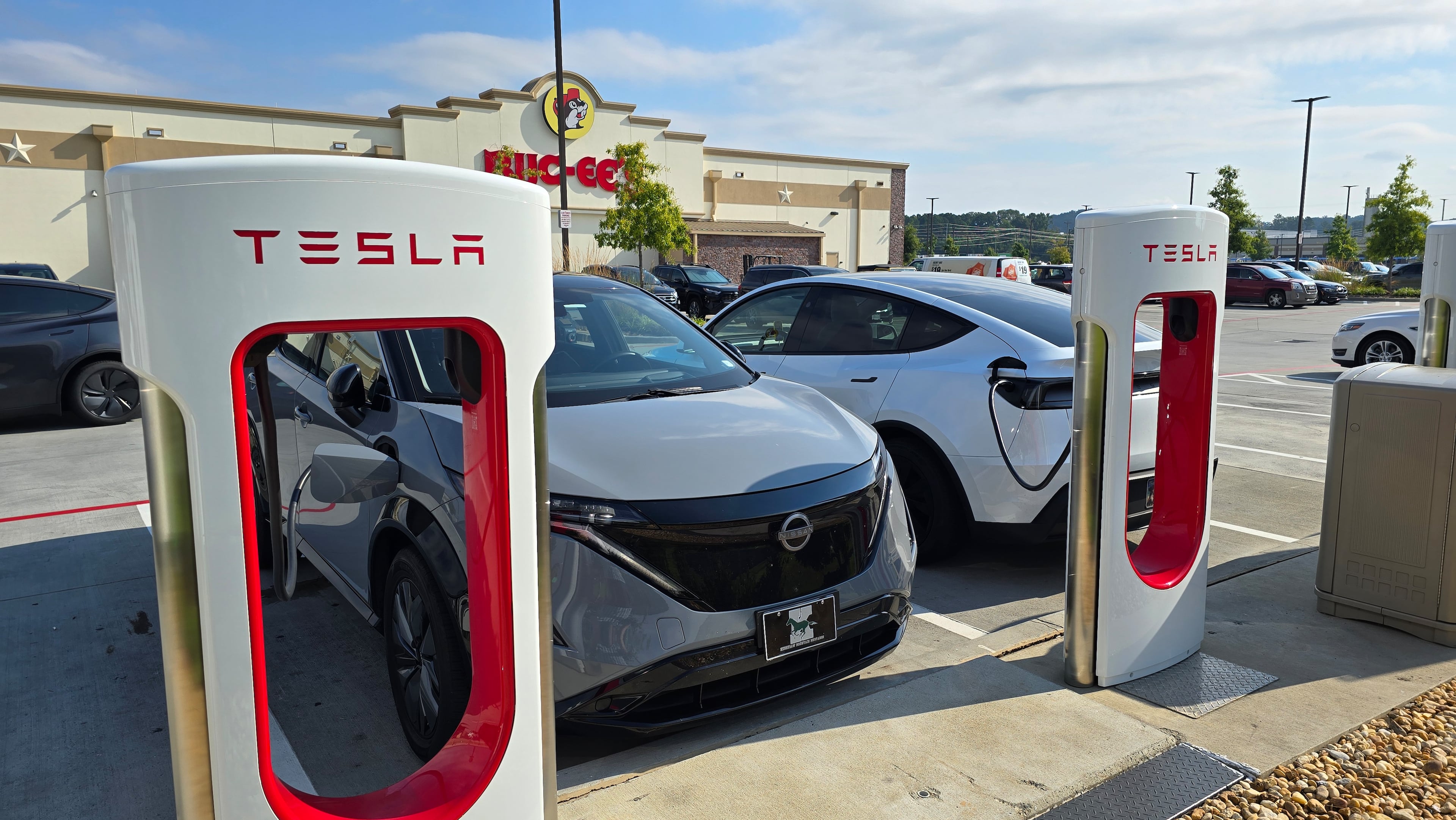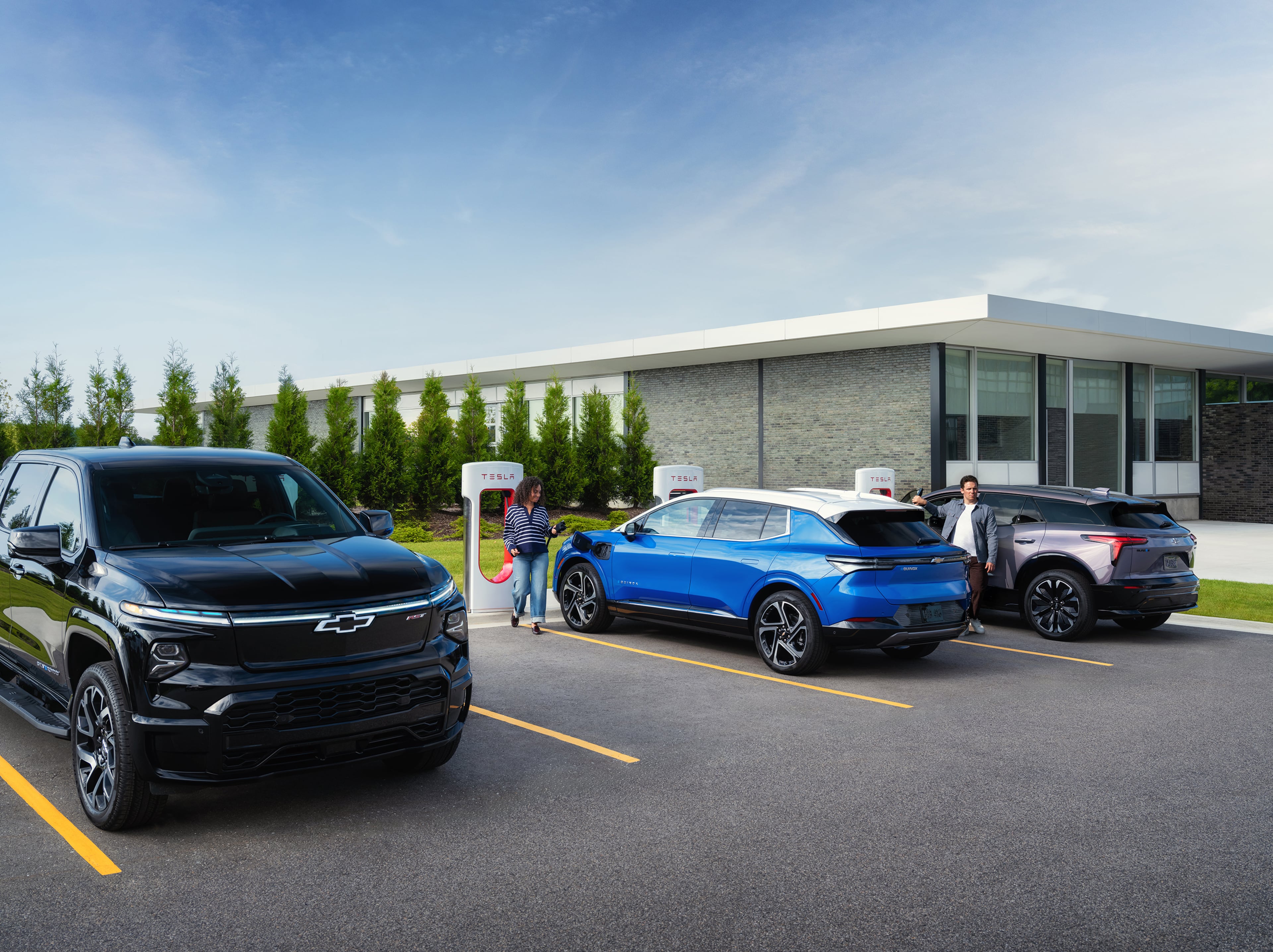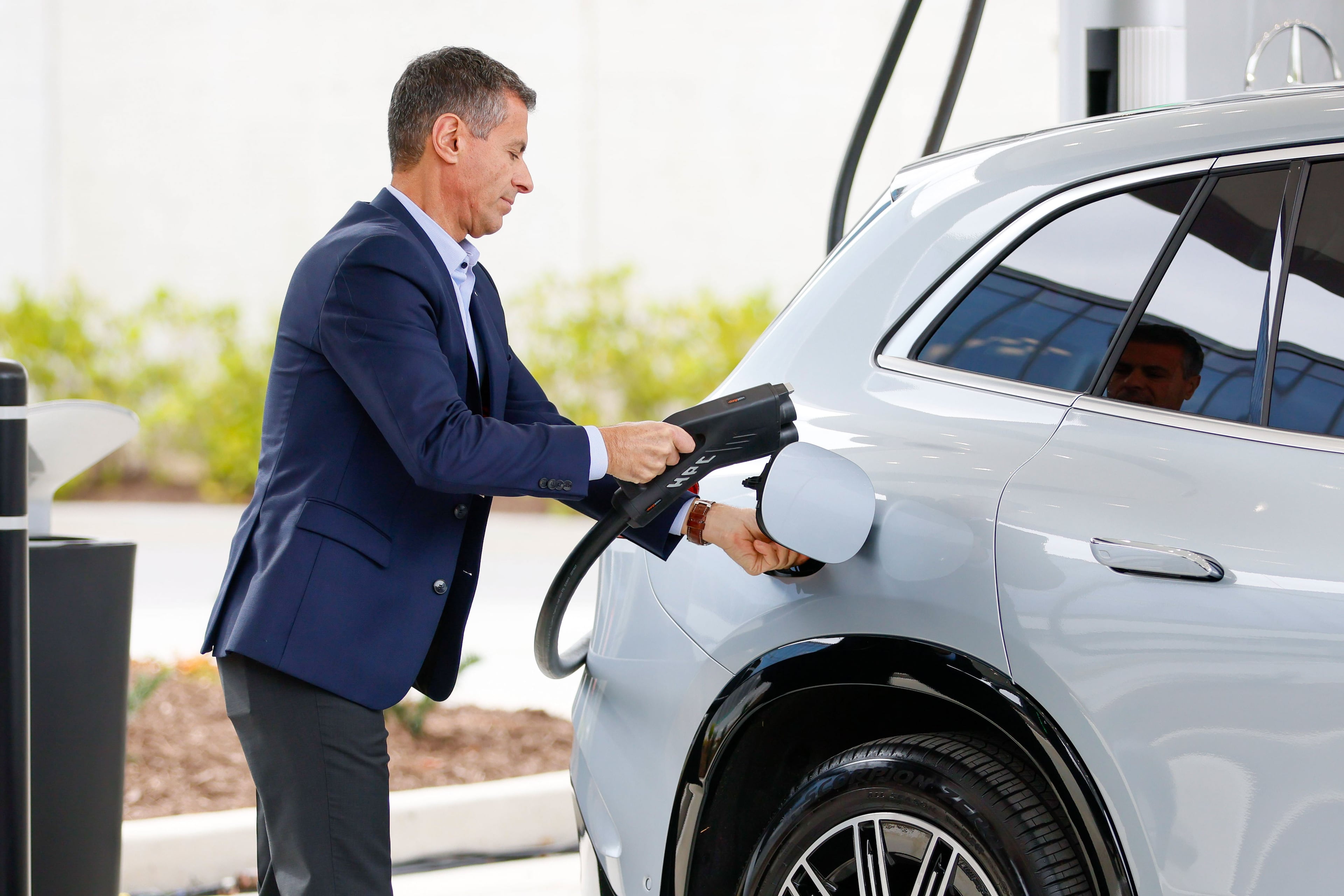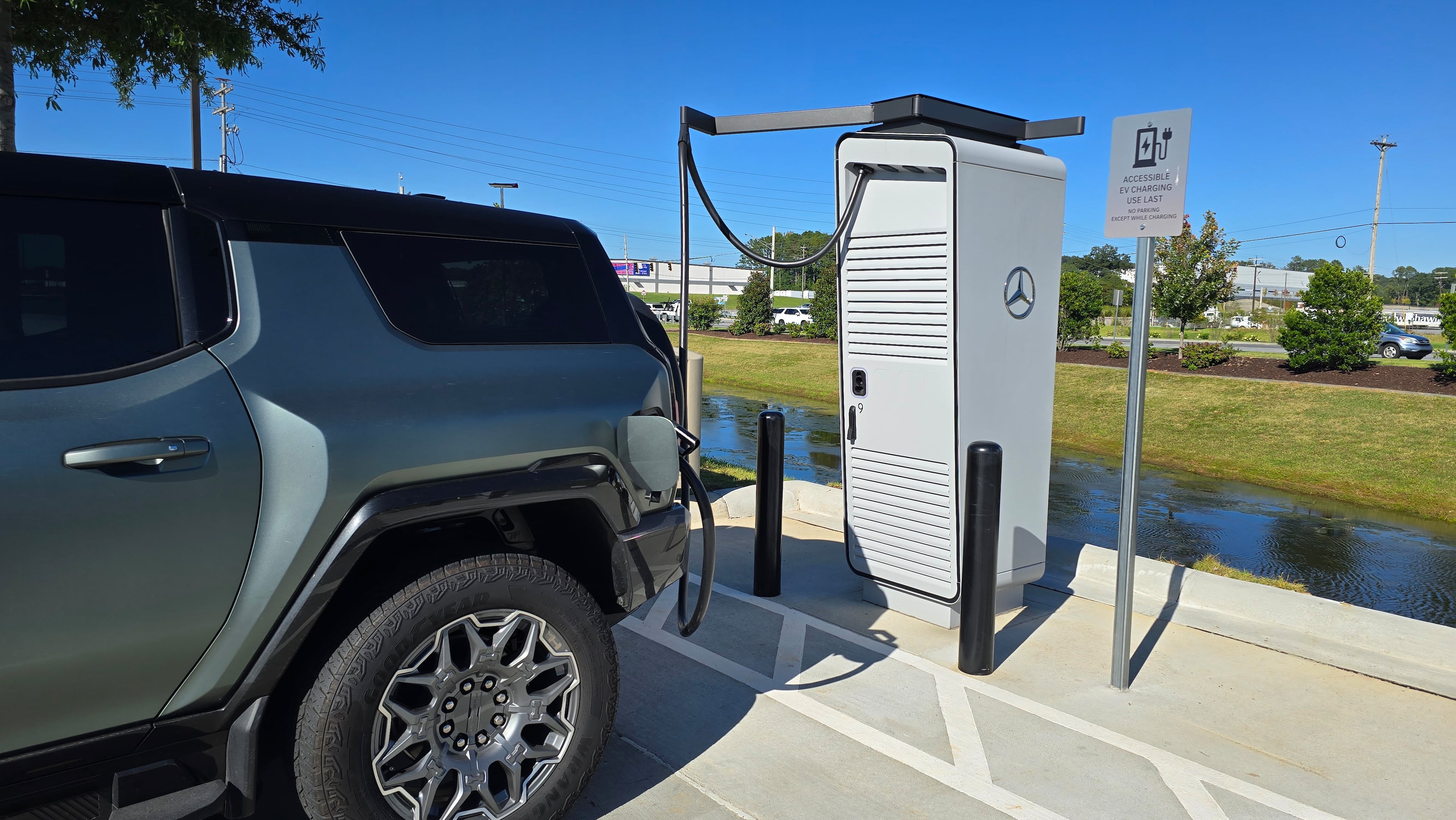Opinion: Charging EVs away from home keeps getting easier
Range anxiety — the fear of being stranded in an electric vehicle without a charge — has loosened its grip on the driving public.
According to the Department of Energy’s Alternative Fuels Data Center, the U.S. has more than 225,000 public charging ports at about 76,000 locations, a sixfold jump over the last decade. The pace is quickening, with deployments on track to add thousands more this year.
Here in Georgia, the story is similarly encouraging. The state ranks eighth nationally, with 6,270 charging ports at more than 2,200 stations, translating to more than 56 chargers and nearly 20 stations for every 100,000 residents.
Initiatives like Georgia Power’s “Make Ready” program, which funds electrical infrastructure for new chargers, and its Community Charging Program, aimed at underserved areas, support this growth.
A significant boost may come from the federal government. After a period of uncertainty, the National Electric Vehicle Infrastructure program is back on track.

Updated guidance released last month unfroze billions in funding, allowing states to move forward with their plans. For Georgia, that means access to $135 million to build out part of the national charging network along our major highways, further solidifying the state’s EV transition.
A market in motion
This infrastructure buildout comes as the EV market matures. While the explosive growth of a few years ago has cooled, Cox Automotive data shows sales are still climbing, while the competitive landscape shifts.
- Record sales pace: Despite a year-over-year dip in the second quarter, the first half of 2025 saw a record 607,089 EVs sold.
- Big discounts: Automakers are relying on incentives to drive sales, with average discounts around 10% of the transaction price, or close to $8,500 in June.
- Expiring tax credit: Analysts suggest the recent sales uptick may reflect consumers rushing to cash in on the federal EV tax credit before it expires on Sept. 30.
- Tesla’s market share is shrinking: Signaling a competitive market, Tesla’s sales dropped 12% in the second quarter of 2025, continuing its market-share decline.
- GM’s position is rising: General Motors doubled its EV sales year-over-year to become the second-largest EV seller, with 12.9% of the market.
This steadier, more diversified growth underscores the importance of a robust charging network. Consumers need to know that no matter which EV brand they choose, reliable refueling options exist away from home, where an estimated 80% of charging still occurs.
The Tesla effect: A network unlocked
Perhaps the most significant development in easing range anxiety is Tesla’s decision to open its vast Supercharger network to other brands. Long considered the gold standard for reliability and speed, the more than 6,500 multiport Supercharger stations were once an exclusive perk for Tesla owners. No longer.

Nearly every major automaker has begun shipping new EVs with a native North American Charging System, or NACS, port or is supplying approved adapters. This transition effectively adds tens of thousands of reliable, high-speed charging ports for non-Tesla EV drivers, dramatically increasing opportunities along major corridors and in cities.
More networks, more options
A few key players have dominated the non-Tesla public charging space: ChargePoint, Electrify America, and EVgo. ChargePoint boasts the largest number of stations overall, while Electrify America has been a leader in high-speed DC fast chargers crucial for road trips.
Now, new and powerful players are entering. The most formidable is Ionna, a joint venture backed by seven major automakers: BMW, General Motors, Honda, Hyundai, Kia, Mercedes-Benz, and Stellantis. Ionna aims to install at least 30,000 high-powered chargers across North America. Their “Rechargeries” are designed as premium experiences, with restrooms, food service, and Combined Charging System and NACS connectors.
As of Q2 2025, Ionna already had more than 200 locations under contract and 12 stations operational, including a Valdosta site with 10 covered bays. Expansion is underway nationwide, with several Georgia sites in planning or construction.
Rivian, too, has flung open the doors of its Adventure Network, once reserved for Rivian drivers. Rivian pairs every site with 100% renewable energy matching, and new hardware features tap-to-pay and oversized displays. It’s a subtle but significant shift: charging without app juggling or card swiping.
Partnerships where drivers are
The collaboration trend among automakers extends further. Mercedes-Benz is building a network of charging hubs, including a branded location at its U.S. headquarters in Sandy Springs, and partnerships to place chargers where drivers already stop. The automaker plans more than 400 hubs with at least 2,500 high-power charging points by 2027, strategically located along highways and in cities across the U.S.

A central part of this rollout is its partnership with Buc-ee’s, the supersized travel center chain, where the partners are adding stations at most locations. The Buc-ee’s Calhoun and Warner Robins sites already feature Mercedes-Benz chargers, with Tesla Superchargers also on-site. Additional collaborations broaden the network, though not initially in Georgia.

Starbucks is equipping over 100 locations along California’s I-5 corridor with fast chargers, while Simon retail properties and Federal Realty shopping centers host dozens more hubs.
The road ahead
With more networks, new partnerships and Tesla’s unlocked Superchargers, charging is less of a chore and more of a routine. Convenience stores, malls and travel centers weave chargers into daily life.
While the road to seamless, universal access still has bumps — charging station reliability and maintenance remain top complaints — the direction is clear. The fear of being left powerless is giving way to a new reality: more plugs in more places. The journey is getting easier every day for EV owners in Georgia and across the country.
Chris Hardesty is a veteran news researcher and editor who provides advice on buying, owning and selling cars for Kelley Blue Book and Autotrader.
The Steering Column is a weekly consumer auto column from Cox Automotive. Cox Automotive and The Atlanta Journal-Constitution are owned by parent company, Atlanta-based Cox Enterprises.

